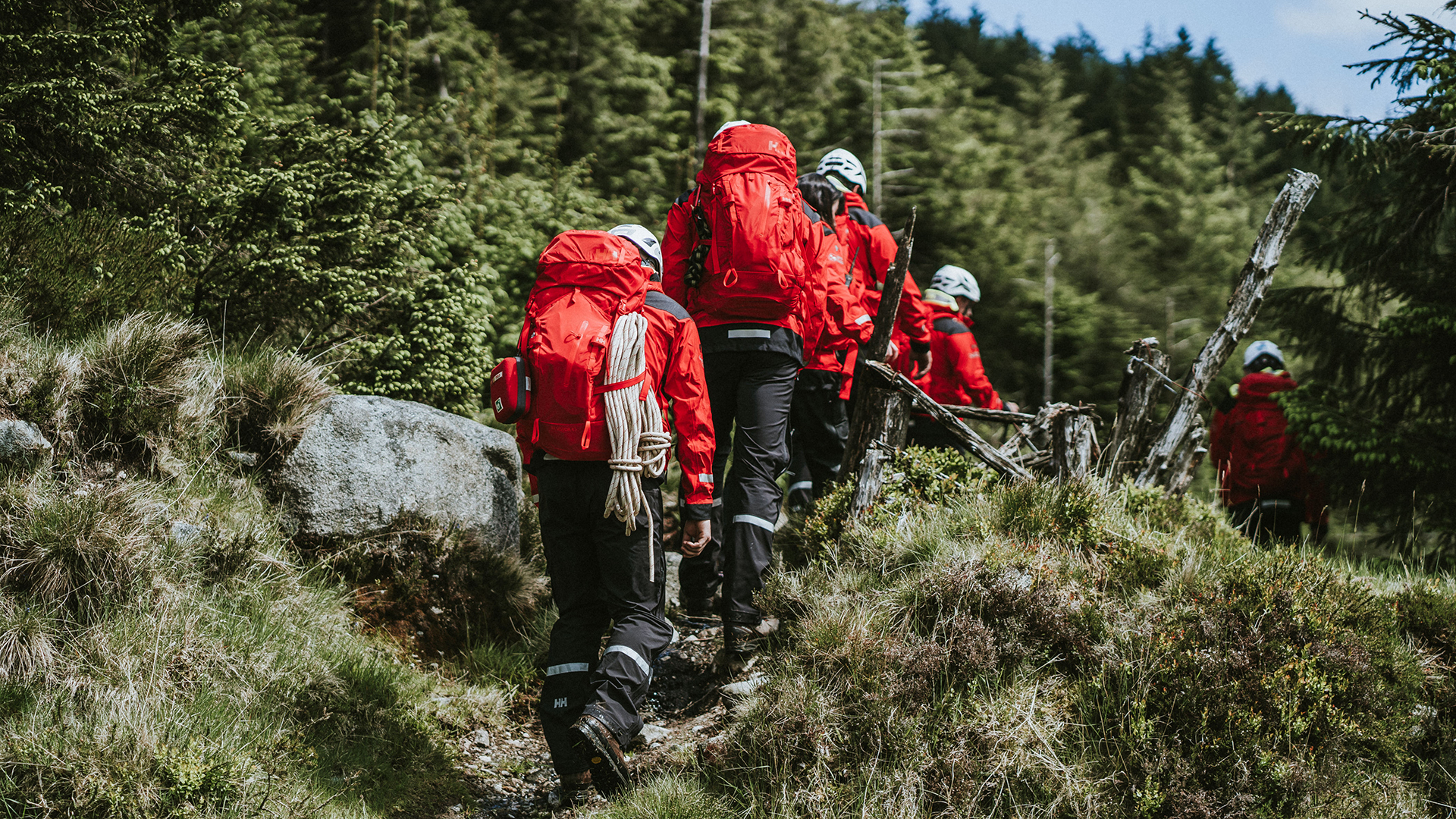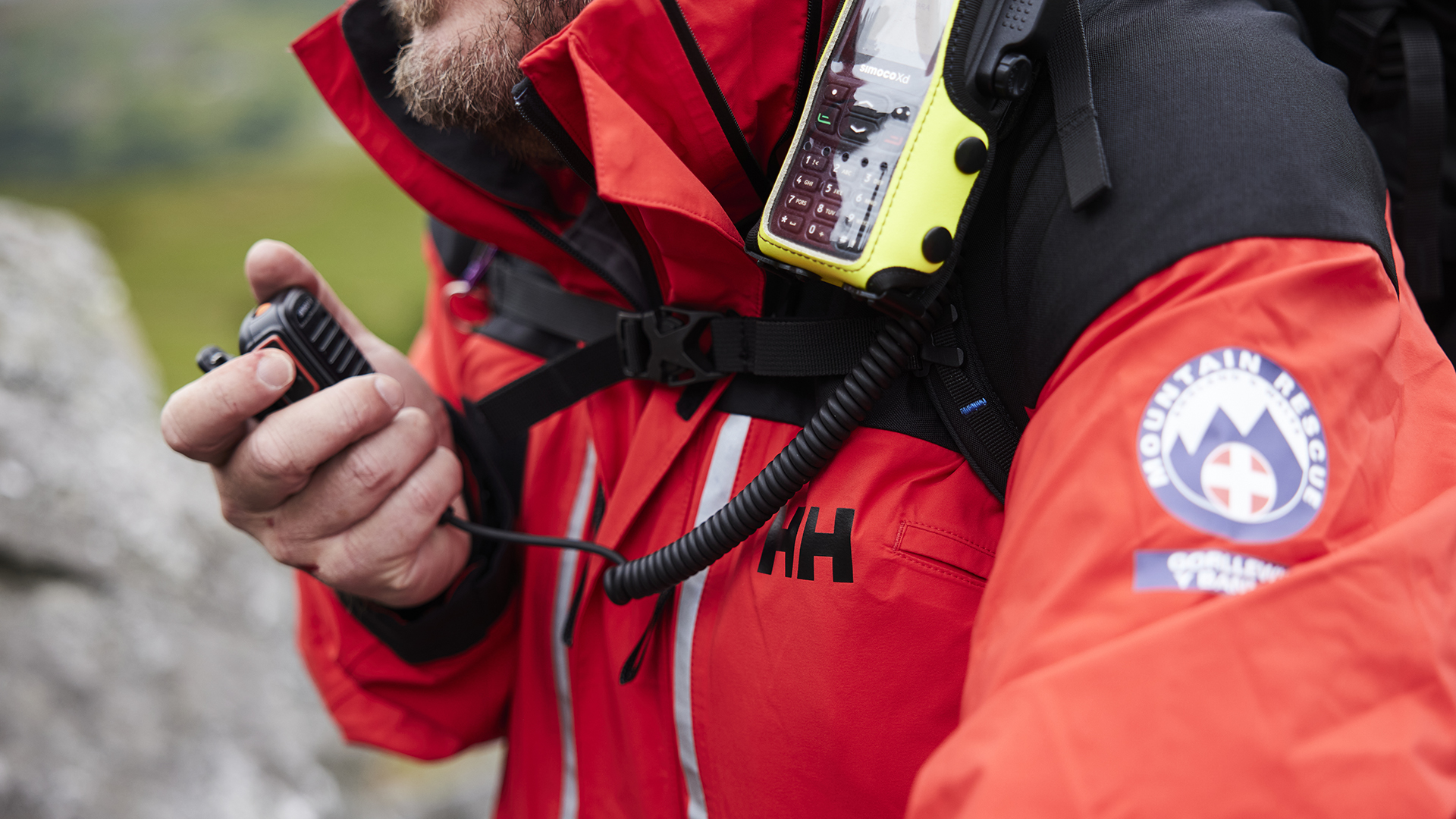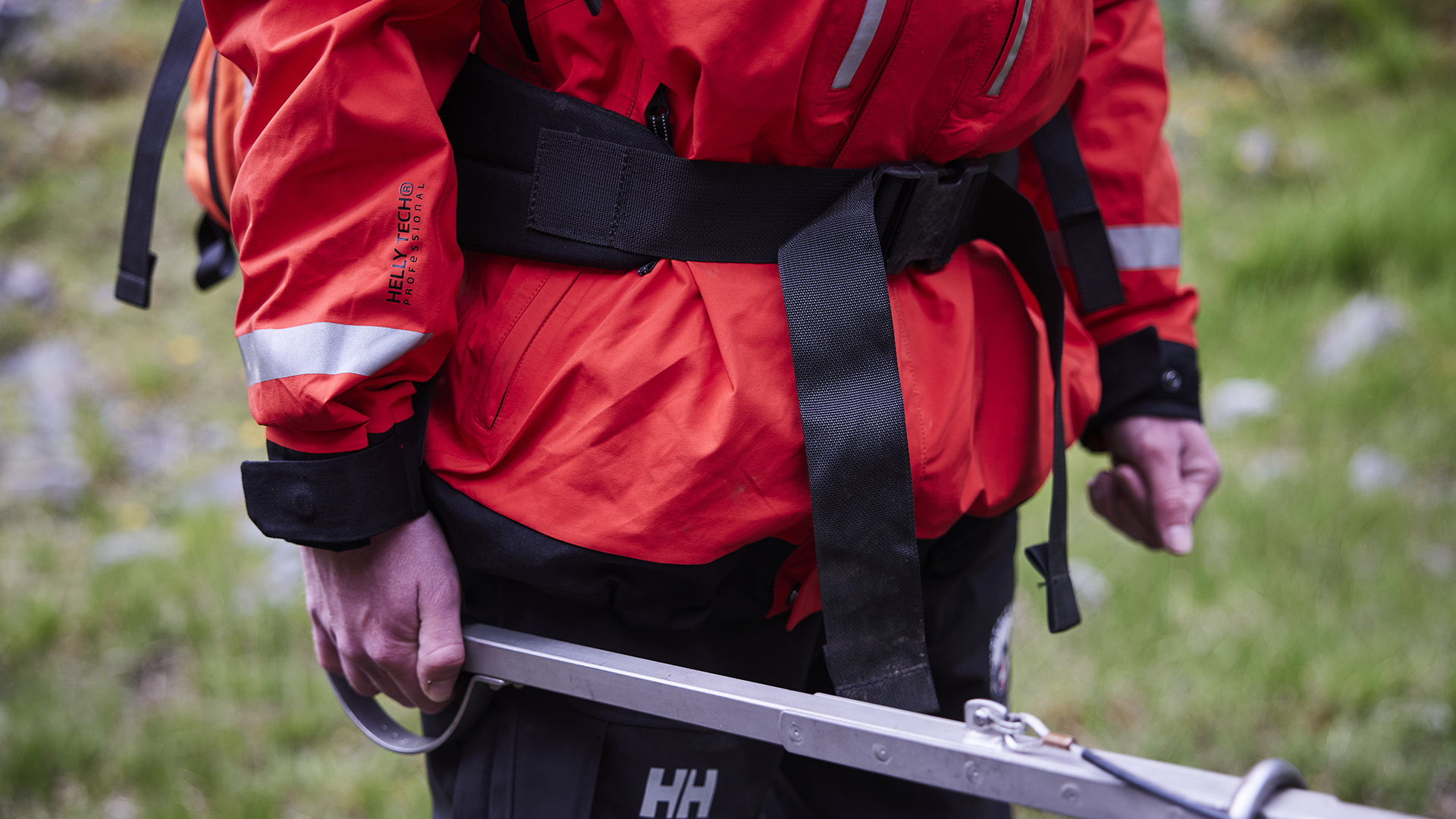
Nobody needs reliable outdoor gear more than our search and rescue teams. The varied challenges these volunteers contend with when out on operations in some of the most demanding terrain in the UK means that they need some pretty specific kit. And no team can speak to this more than the Western Beacons Mountain Rescue Team.
This team covers the largest area of any of the various teams across the UK, with their purview covering all of Pembrokeshire and much of the Brecon Beacons (Bannau Brycheiniog). This western corner of Wales also happens to be one of the UK’s busiest hillwalking regions, as well as one of the wettest parts of the country, a dangerous blend that sees the team out on more than 60 operations a year.
So what do team members need in order to stay safe out there? And how does the kit differ from what you and I might wear on a wild camping, hiking or backpacking trip? Let’s take a look.
Gear designed specifically for search and rescue
Historically, search and rescue teams have been entirely volunteer-led organizations. This means that team members had to personally equip themselves with everything they needed for the job, bringing their own jackets, boots and packs, as well as all other specialist items needed for operations. But due to the unique nature of the work the teams undertake, most mass-market hiking, camping or backpacking gear leaves a lot to be desired.
Take hardshells, for example: search and rescue teams experience rapid periods of intense high-output activity while climbing to a casualty as quickly as possible. These are then often followed up by long periods of less intense activity as the teams wait for evacuation or assist with injuries. This sudden jump from high to low-intensity activity is something many hardshells aren’t classically adept at. And the climbing fit associated with some of the top lines means that the kit simply lacks the necessary features the teams need while out on operations.

This is a reality that Norwegian outdoor brand Helly Hansen is acutely aware of. As part of the brand’s commitment to outdoor wear that’s ‘trusted by professionals’, it works with more than 50,000 outdoor pros to design equipment that’s 100% fit for purpose. The company works with thousands of skiers to design the most optimized skiwear, with professional sailors to design the best waterproof watersports equipment and, for the last four years, with the Western Beacons Mountain Rescue Team to design the most functional equipment for search and rescue teams worldwide.
Designing by iteration
To deliver on its brief of creating gear to ‘protect Mountain Rescue volunteers against the UK’s unique temperate weather conditions and varied landscapes’, the last four years have seen numerous prototypes, feedback rounds and design iterations tested by the teams in the field. In total, Helly Hansen has worked through three prototypes to land on the equipment used by Western Beacons Mountain Rescue Team today, and it’s far from finished yet. As more feedback comes in, the brand will continue to iterate on its clothing to ensure that the teams have everything they need.
To collect this feedback, the Western Beacons Mountain Rescue Team’s team leader sits down with Helly Hansen every three months and passes on thoughts, feedback, complaints and feature requests, all based on the team’s own experience of the kit in the field. This could be with the placement of zips or toggles or, as was the case in a recent iteration, the size of the hoods, which didn’t quite fit over the helmets the team uses. Then, Helly Hansen takes the comments back to its product designers and updates the design of the kit to fit this very specific brief. And so far, the Western Beacons Mountain Rescue Team is very happy with the result.

“This is probably the best kit we’ve ever had”, said Nick McAllister, a long-time member of the Western Beacons Mountain Rescue Team who’s been through it all over the years. “We’ve had Paramo, we’ve had Keela, we’ve had Mountain Equipment and way, way back we had Slioch, which was a Scottish company, so we’ve been through a fair few different makes. And, I think, Helly has probably designed the best [equipment] we’ve come across so far.”
What do search and rescue teams wear on operations?
When search and rescue teams head out, they need to lug a ton of specialized gear up onto the mountain with them. They take specialized stretchers, ropes and medical equipment, as well as radios, helmets, torches and more.
When it comes to clothing, however, their kit lists are not substantially different to what you or I might take on a multi-dayer in winter. Think base layers, mid layers and a waterproof hardshell, as well as waterproof overtrousers, boots, hats and gloves.
But whereas you might peel on a lightweight waterproof jacket when the heavens open, Western Beacons Mountain Rescue Team need something a little more custom-made. It needs to be comfortable under a heavy pack, warm in the wind, yet optimally breathable for those long intense marches out into some of the most open and wild country in the UK.
What’s more, with a packing list of extra kit as long as your arm, the team need additional features that you simply won’t find on civilian wear, such as mounts for a radio, extra pockets for maps and compasses, hand warmer pockets for when the wearer is performing complicated first aid on a casualty in the cold, massive zip pulls for opening and closing compartments in the pitch black when wearing big winter gloves, or various tassels and fasteners for carrying things like whistles, lanterns or GPS devices.

Features of Helly Hansen’s Mountain Responder Kit
Advanced waterproofness and durability
To improve not only the safety of the crews when out on operations but also their overall comfort, Helly Hansen has instituted a series of features that are only found on their Mountain Responder gear. When looking at the Squad jacket, for example, Helly Hansen’s flagship Responder line that received the most feedback during the design and iteration process, you’ll see the same three-layer, hyper-durable waterproof technology found in the brand’s top-of-the-line Odin jacket.
To ensure long-lasting durability the jacket comes with added reinforced fabrics in high-abrasion areas, seamless shoulders to ensure no water ingress over time, and added sun dye to prevent UV damage and colour fading. Burly and able to put up with all of the various demands a search and rescue team might throw at it, the result is something that instantly instils confidence in the wearer – even if an ultralight thru-hiker might scoff at the weight of this thing.
Increased visibility and pockets
To ensure the wearer can be easily spotted in the field, the Responder Squad jacket also comes with additional high-visibility features such as numerous reflectors and a hi-vis brim around the hood, as well as being designed to be much more hard-wearing and longer lasting than the reflective material you get on most mass-market products. And even though this might sound like a minor improvement over conventional clothing, Nick McAllister specifically praises this tweak. “The reflective is really good. It’s worn very, very well. With some manufacturers, the reflective material doesn’t wear at all.”
So responders can more easily carry and access everything they need when out in the field, the Squad jacket also comes with extra storage options, such as two large dump pockets on the chest which also work as handwarmer pockets, and loops to the left of the chest to mount a microphone or a radio.
Finally, an additional pocket for a pen has been added inside the chest pocket, which is a small but meaningful addition when it comes to saving lives on the mountain. “You use a pen a lot when out on operations, [be it] to jot down grid references and note what equipment is being used, or you might even need to write down a mobile number,” says Nick. “And when we’re on search, we attend an initial briefing to find out who we’re searching for, what they’re wearing and all sorts of stuff. So you’re actually using a notepad and pen constantly. Which obviously differs from general hillwalking.”

Enhanced usability features
The hood on the Squad jacket has also undergone some tweaks in comparison to civilian models, having been designed to be as easy as possible to pull on and off when moving through the worst conditions. In order to avoid water ingress when using it – as well as allowing the wearer to use the hood one-handed – an additional gusset has been added to the collar so the hood can be used without needing to unzip the top of the jacket.
The same consideration has been made on the cinches around the wrist. In order to increase the longevity of the jacket and to ensure the wearer has a plan B should anything break, these come with both a hook and loop system, and a simple snap button should the first option ever wear out. What’s more, to ensure the jacket fits all body types, the sleeves can be lengthened or shortened with a simple tab and button inside the arm, “Because not everybody is built the same, are they?” explains Nick. “Ultimately, there are lots of little things with the kit that make it so effective.”

More than just a jacket
The Squad jacket is a piece of gear that has been designed to be more than just a waterproof jacket. It’s a tool that helps teams with operations, in the same way that a specially designed stretcher helps get people safely off the mountain. And the response from the Western Beacons Mountain Rescue Team has been very positive to Helly Hansen’s creation so far.
Iterative and ongoing, however, the pursuit of the most optimized kit for search and rescue teams is far from over. And both the Western Beacons Mountain Rescue Team and Helly Hansen will keep iterating and testing until there’s simply nothing better out there.

Donate to the Western Beacons Mountain Rescue Team
Being almost entirely self-funded, Western Beacons Mountain Rescue Team rely on donations from members of the public to carry out their vital work. And, even though they’re now receiving gear from Helly Hansen, the team still has substantial ongoing running costs, including replacing a worn-out Land Rover that the team relies on to get them in and out of western Wales’ wide open landscape.
To support their life-saving work, consider donating anything you can afford at the link below.







